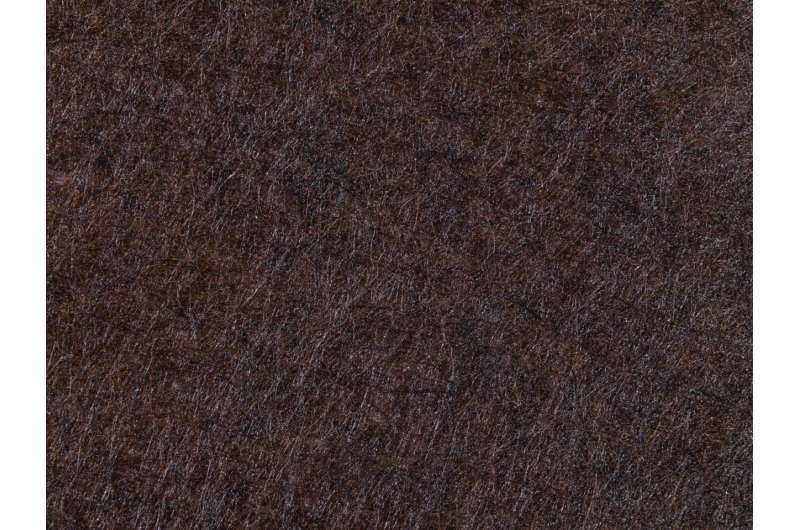This article has been reviewed according to Science X's editorial process and policies. Editors have highlighted the following attributes while ensuring the content's credibility:
fact-checked
trusted source
proofread
Jiu Jitsu club stage physical assaults to help advance forensic research

Researchers from Northumbria University and King's College London have published findings outlining the extent that textile fibers transfer during controlled assault scenarios.
Their work, recently published in the academic journal Science & Justice, is the first time the number of fibers transferred between garments during physical assaults has been assessed by simulating the act with real people through Northumbria University's Jiu Jitsu club.
Dr. Kelly Sheridan, Assistant Professor of Forensic Science in Northumbria's Department of Applied Sciences, believes the findings will help fill a knowledge gap in the forensic field and inform the evaluation of fiber evidence in criminal cases involving assaults.
"The importance of this research is that many experimental studies in forensic science are often a far cry from real-life situations, and we wanted to address that in this study," Dr. Sheridan said. "We wanted to investigate the extent of fiber transfer during different types of physical assaults using real people for the first time and Dr. David Chalton, who leads the Jiu Jitsu club, made it possible."
Knowledge of the number of fibers transferred during a physical activity is essential for the interpretation of forensic evidence in many criminal cases and existing studies have already provided important data on how variables such as increased time and pressure during physical contact can impact on the number of fibers which transfer. However, the extent and variability of fiber transfer in uncontrolled scenarios including real-life situations, is largely unknown.
Members of Northumbria's Jiu Jitsu club were asked to either play the role of an aggressor or a victim in four simulated scenarios which included high and low intensity activities over different time periods.
Results showed that approximately 1,000 to 44,000 fibers were cross-transferred between the participants' garments, with noticeable differences between the different scenarios.
Dr. Sheridan added, "Primarily, what this has demonstrated is that the sheer quantity of fibers found to transfer are far greater than anything previously published. We hope that using these realistic scenarios will help to inform expectations during the evaluation of fiber evidence."
Dr. David Chalton is Northumbria's Lead Coach for Jiu Jitsu and has taught the close combat martial art at the University for almost 20 years.
"Our style of Jiu Jitsu covers striking, throwing and to a lesser extent ground-fighting. We focus on a self-defense approach, so the situations Dr. Sheridan wanted to simulate were quite straight forward and familiar for us," Dr. Chalton explained.
"The club members were really keen to contribute and apply their training for a purpose beyond their own personal and club development, so we had no shortage of volunteers to put on the dyed training uniforms which were used to help track the fiber transfer."
Dr. Ray Palmer is an independent forensic science consultant who is also an Associate Lecturer at Northumbria. He worked with Dr. Sheridan to develop the research concept and the methodology was progressed by the research team, which included final year Forensic Science students.
"I'm pleased with the results of this study as it provides information of great value to practicing forensic scientists who provide expert testimony in a court of law," Dr. Palmer said. "The methodology we employed in this study provides a more robust assessment of the effects caused by actual physical assault scenarios, than any existing similar study available to forensic practitioners."
Assistant Professor in Forensic Chemistry at King's College London, Dr. Matteo Gallidabino, joined the team to help interpret the findings of the study. He explained, "My field of expertise is chemical evidence with an emphasis on gun shot residues and explosives. For both, characterizing the transfer mechanisms of the materials involved is important for the assessment of the forensic findings and the outcome of a criminal case often comes down to understanding the differences between different scenarios.
"Our research aims to offer the appropriate frameworks for that interpretation to take place and, after speaking with Dr. Sheridan, we both felt there was something more we could offer to inform this area of research by using a simulation-based approach."
More information is available in the full research paper, "A quantitative assessment of the extent and distribution of textile fiber transfer to persons involved in physical assault," published in the official journal of The Chartered Society of Forensic Sciences, Science & Justice.
More information: Kelly J. Sheridan et al, A quantitative assessment of the extent and distribution of textile fibre transfer to persons involved in physical assault, Science & Justice (2023). DOI: 10.1016/j.scijus.2023.05.001
Provided by Northumbria University





















